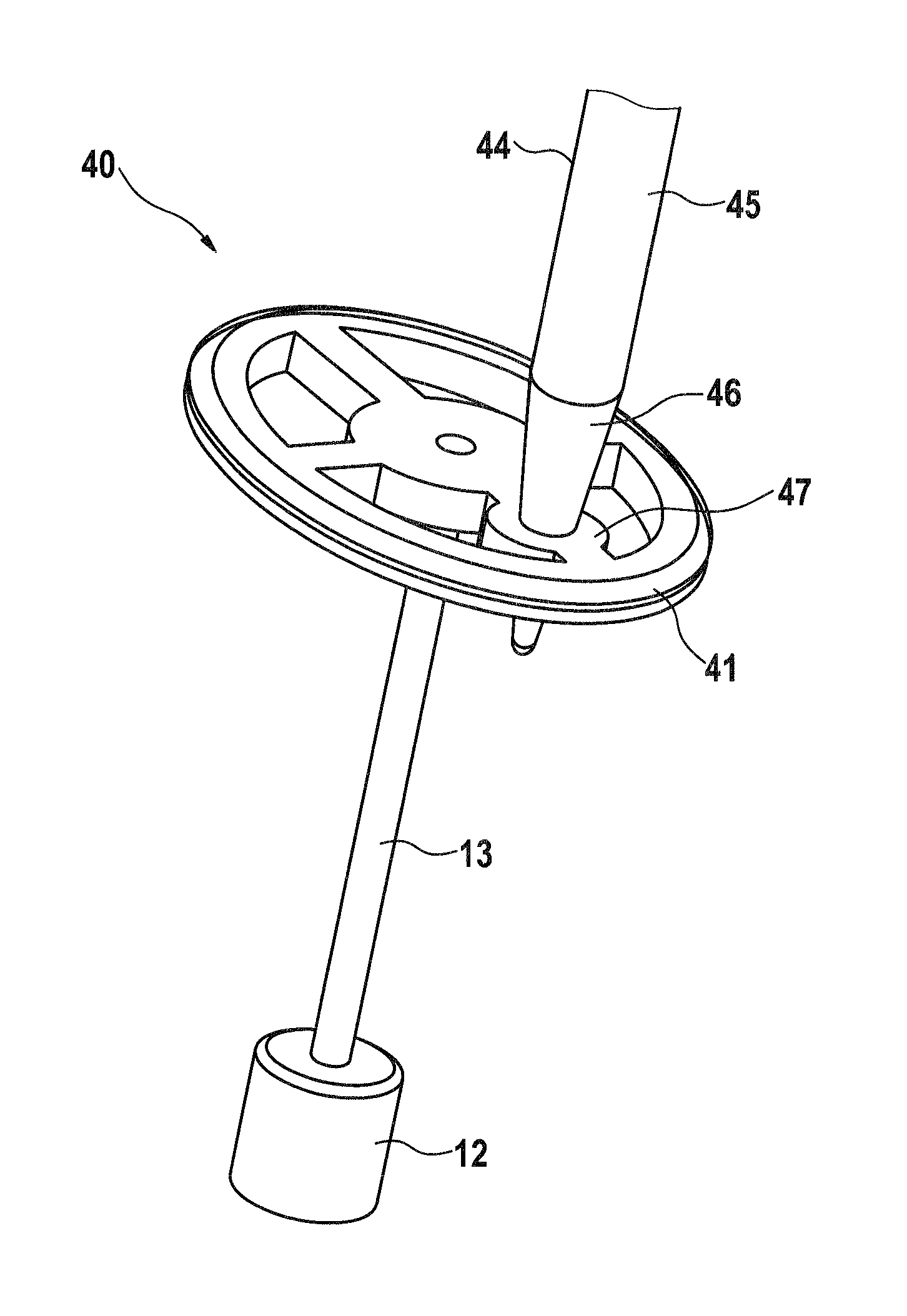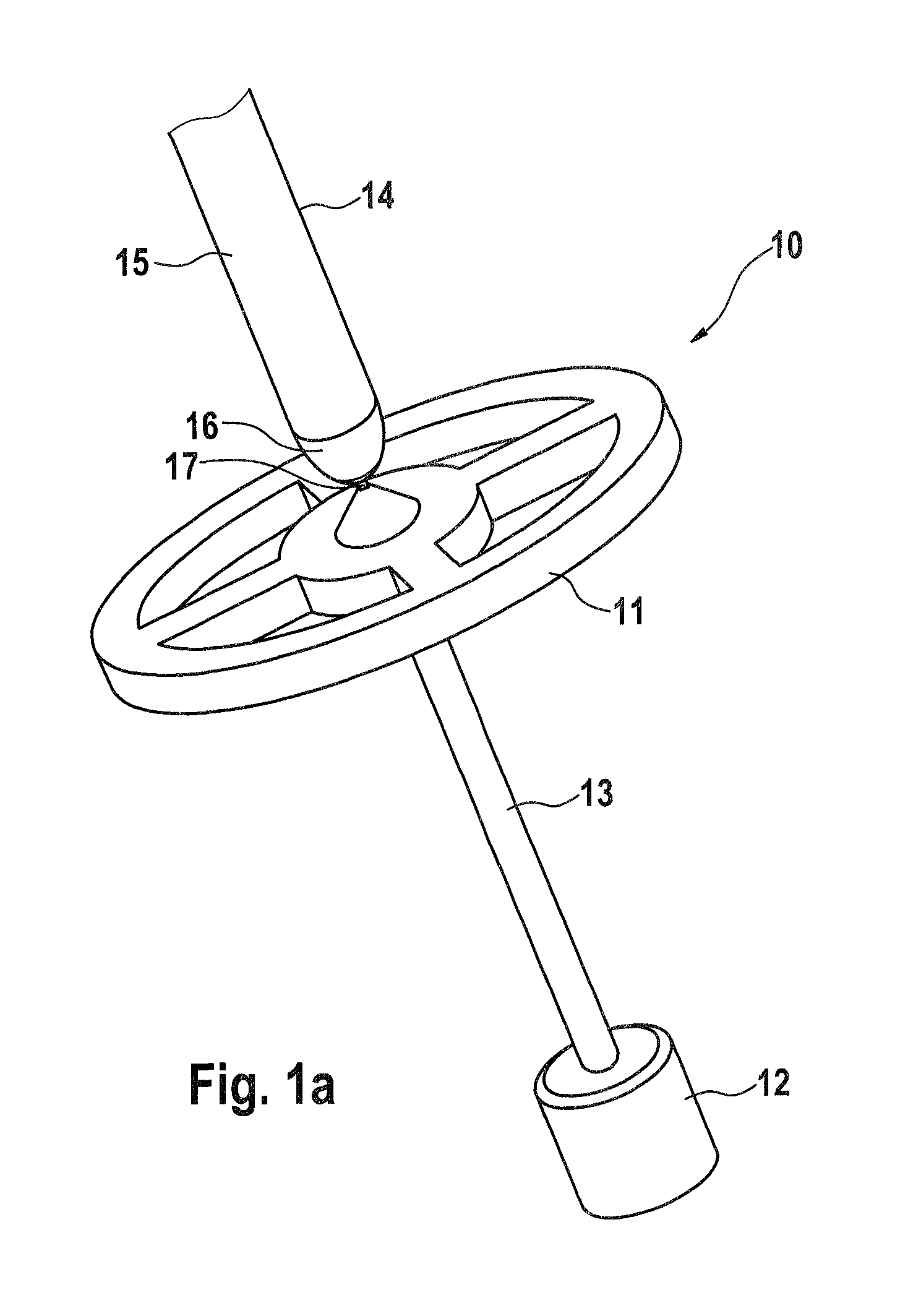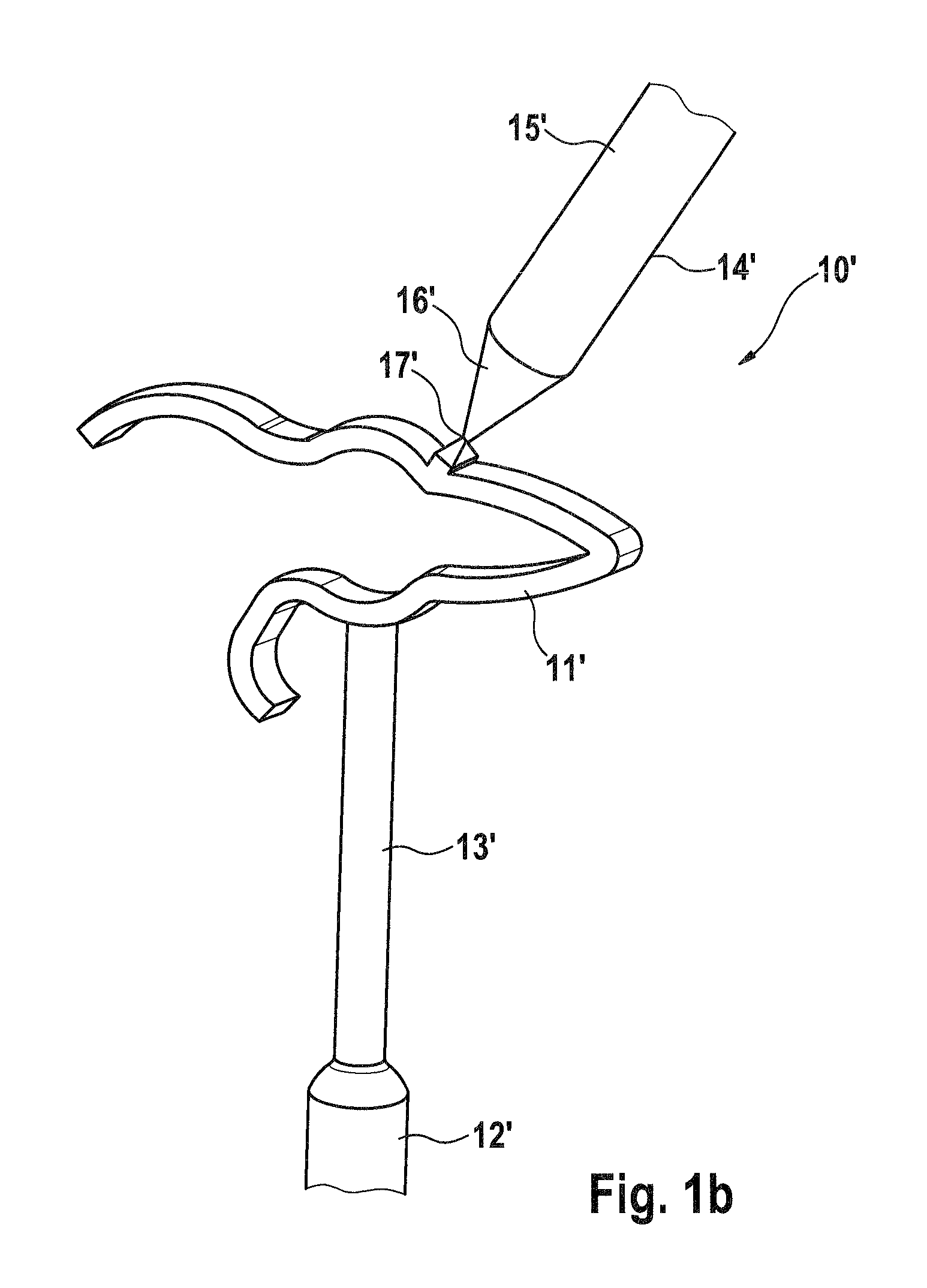Passive ossicle prosthesis comprising applicator
a technology of ossicle prosthesis and applicator, which is applied in the field of passive ossicle prosthesis comprising an applicator, can solve the problems of less than optimal selection of tools, difficult practice handling of prostheses, and insufficient disinfection and sterilization, so as to prevent post-operative rejection reactions and avoid a great deal of additional technical complexity. , the effect of preventing post-operative rejection reactions
- Summary
- Abstract
- Description
- Claims
- Application Information
AI Technical Summary
Benefits of technology
Problems solved by technology
Method used
Image
Examples
Embodiment Construction
[0053]The embodiments of ossicle prosthesis 10; 10′; 20; 20′; 30; 40; 50 according to the present invention and depicted schematically in the figures in different levels of detail each includes, at one end, a first fastening element 11; 11′; 21; 21′; 31; 41; 51 which is used to mechanically connect the prosthesis to the tympanic membrane or a component of the ossicular chain, in particular to the limb of incus or the manubrium of malleus. Attached to the other end of ossicle prosthesis 10; 10′; 20; 20′; 30; 40; 50 is a second fastening element 12; 12 for mechanically connecting the prosthesis to a component or parts of a component of the ossicular chain, e.g., via a bell 12 to the base of the stapes, or for direct insertion into the inner ear via a piston 12′. Located between the two is a connecting element 13; 13′; 13″ that connects the two fastening elements 11; 11′; 21; 21′; 31; 41; 51 and 12; 12′ in a sound-conducting manner; in all of the embodiments shown, connecting element 1...
PUM
 Login to View More
Login to View More Abstract
Description
Claims
Application Information
 Login to View More
Login to View More - R&D
- Intellectual Property
- Life Sciences
- Materials
- Tech Scout
- Unparalleled Data Quality
- Higher Quality Content
- 60% Fewer Hallucinations
Browse by: Latest US Patents, China's latest patents, Technical Efficacy Thesaurus, Application Domain, Technology Topic, Popular Technical Reports.
© 2025 PatSnap. All rights reserved.Legal|Privacy policy|Modern Slavery Act Transparency Statement|Sitemap|About US| Contact US: help@patsnap.com



